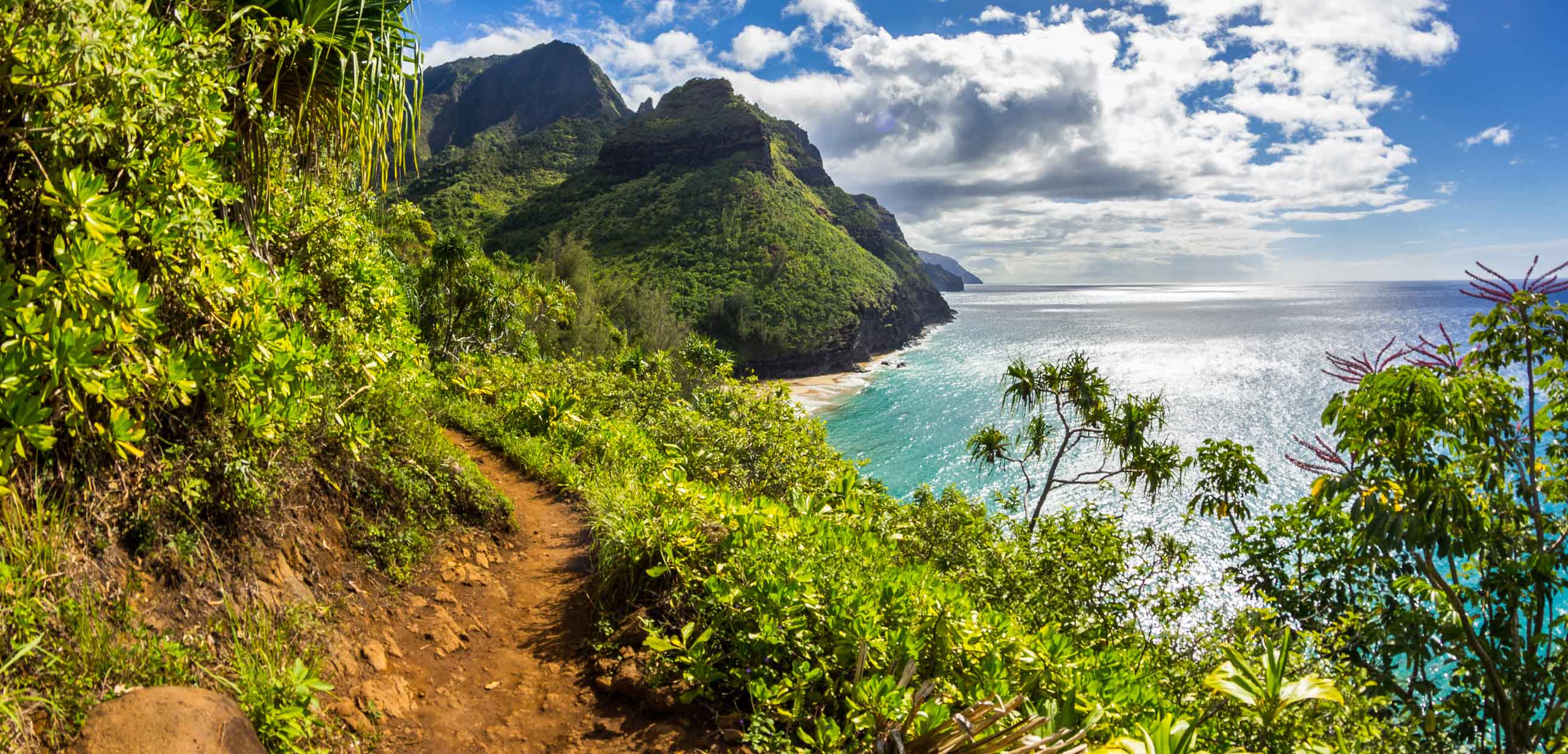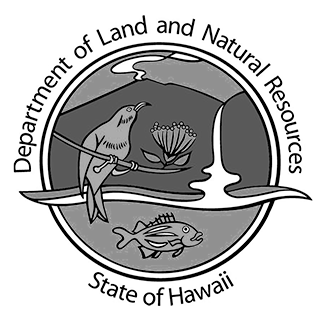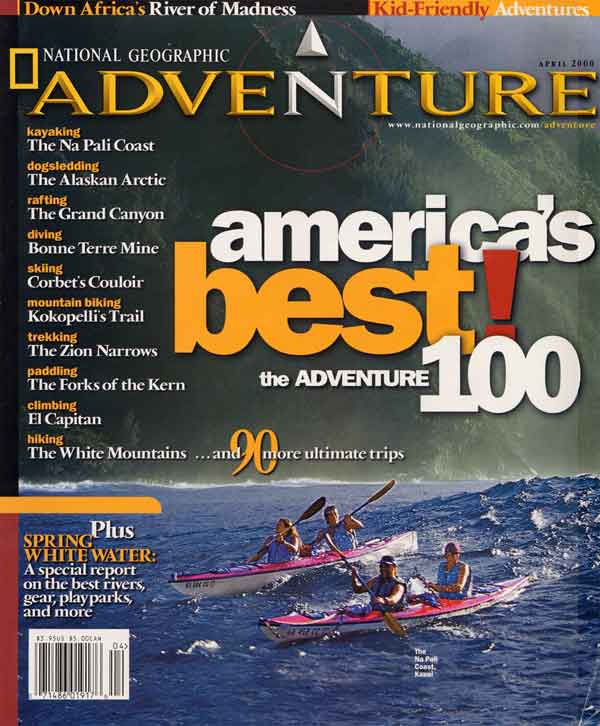What Gear Should You Bring?
Kayak Kauai provides high-quality camping rental gear to ensure your comfort on the trail or water. From tents and sleeping bags to stoves, fuel, and hiking poles, we have everything you need for your Na Pali Coast adventure. We also stock freeze-dried food to keep you fueled during your journey.
Gear for Kayak Camping
Pack Light, Paddle Safe
Don’t dare to take more than you would carry on your back if you were
backpacking. Go lean and mean. Overloading your kayak can compromise its stability and flotation, creating risks for yourself and the group. For everyone’s safety, we reserve the right to refuse service or remove excess gear, which can be stored at your expense.
Clothing
Pack as minimally as possible to avoid compromising your kayak’s flotation:
- Hat
- T-Shirt
- Shorts
- Sandals
Sleeping Gear
A compact, simple sleeping setup:
- Long Johns
- Warm Shirt
- Thin Sheet or Blanket
- Sleeping Pad and Tarp
Food and Cooking
- Bring, or rent a compact stove.
- Note that TSA will occasionally confiscate stoves, and/or empty fuel bottles.
- Butane/propane canisters are not allowed on any aircraft.
- Remove wrappers from food and double-bag in zip-lock bags.
- Label cans with a waterproof marker after removing paper labels.
- Use a net bag for canned goods (it doubles as an anchor).
Packing Your Kayak
Efficient packing is essential since all gear is stored on top of the kayak:
- Use small parcels (bowling ball size).
- Nylon stuff sacks with trash compactor bags work best.
- Avoid heavy or bulky items like lawn chairs or electronics.
Water
Treat your water chemically for the safest results:
- Boiling is always effective.
- Springs at Milolii provide fresh water.
Do Not Bring!
- Lawn chairs.
- Anything strapped outside your kayak.
- Electronics, unless waterproof or stored in a waterproof case.
Gear for Backpack Camping
Backpacks for Multi-Day Hikes
A good backpack is the cornerstone of your Na Pali Coast adventure. Choose a pack that balances capacity, comfort, and weight.
Minimalist Na Pali Uniform (Head to Toe)
Pack light, and choose versatile items that serve multiple purposes:
- Hat
- Skull Cap (doubles as a sleeping layer or for chilly weather)
- Sunglasses
- Rain Gear (waterproof jacket or poncho)
- Light Sweater or Fleece Jacket (can also be a sleeping layer)
- T-Shirt
- Long Sleeve Shirt (adds sun protection and warmth)
- Shorts and/or Bathing Suit
- Long, Loose Pants
- Shoes:
- Light hiking boots
- Athletic sandals
- Tennis shoes
- Tabis (local favorite with a felt sole and cloven toe)
- Socks (bring extra pairs for warmth and comfort)
Minimalist Sleeping Gear
Leave bulky sleeping bags at home. Use your spare clothes for warmth:
- Light Fleece Blanket
- Sleeping Pad
Tent Options
A lightweight tent is highly recommended.
- At Hanakoa: A good tent keeps rain and bugs at bay.
- At Kalalau: Tents are optional in dry weather; caves can provide shelter in summer but should be avoided during winter storms.
For minimalists, consider a tarp, line, and mosquito net. A tarp is versatile as sun protection, water catchment, or ground cover.
Stove
- Bring, or rent a compact stove.
- Note that TSA will occasionally confiscate stoves, and/or empty fuel bottles.
- Butane/propane canisters are not allowed on any aircraft.
Keeping Things Dry
Pack your items in small parcels for better protection and organization:
- Use nylon stuff sacks lined with trash compactor bags for waterproofing.
- Trash compactor bags are durable and prevent leaks.
Water
There are fresh springs along the trail, but always treat water.
- Chemical treatments (like iodine) are most effective.
- Filters may not remove all bacteria.
- Boiling water is always safe.
How to Get a Camping Permit for the Na Pali Coast
To camp along the Na Pali Coast, you’ll need a valid camping permit for the Na Pali Coast State Wilderness Park. Here’s how to obtain one:
-
Determine Your Camping Dates:
Permits are available up to 90 days in advance. Plan your trip accordingly, especially during peak seasons when permits can sell out quickly. -
Access the Reservation System:
Visit the Hawaii Camping Reservation System at camping.ehawaii.gov. -
Create an Account:
If you’re a first-time user, you’ll need to create an account to proceed with the reservation. -
Select Na Pali Coast State Wilderness Park:
Navigate to the reservations page and choose Na Pali Coast State Wilderness Park. Note that camping permits are issued specifically for Kalalau Valley, but they also allow for camping at Hanakoa Valley (not reachable by sea kayak). -
Choose Your Dates and Group Size:
Enter your desired camping dates and the number of people in your party. Remember, the maximum stay is five consecutive nights. -
Review Fees:
Camping fees are $25 per person per night for Hawaii residents and $35 per person per night for non-residents. -
Complete the Reservation:
Follow the prompts to finalize your reservation and make the necessary payment.
Important Considerations
-
Haena State Park Entry:
To access the Kalalau Trail, you’ll pass through Haena State Park. A valid Na Pali Coast camping permit grants you access to Haena State Park without needing a separate entry reservation. -
Facilities and Services:
There are no drinking water sources, trash services, or cell phone coverage in Na Pali Coast State Wilderness Park. Stream water must be treated, and all trash must be packed out. Composting toilets are available at Hanakapiai, Hanakoa, Kalalau, Nualolo Kai, and Milolii. -
Trail Conditions:
The Kalalau Trail is challenging and can be dangerous, especially during adverse weather conditions. Ensure you’re well-prepared and check current trail conditions before embarking on your journey.
Weather Conditions and Reports
- NOAA Marine Forecast
- National Weather Service: 808-245-6001
Logistics
Camping or Hotel Before Your Backpacking Trip
Camping Options
If you need a place to camp before your trip, here are some popular options:
- Anini County Beach Park: Located east of Hanalei. Note that the park is closed from 10:00 a.m. on Tuesdays until 12:00 noon on Wednesdays for maintenance.
- Lydgate Park Campground: Conveniently located near our Wailua Shop. A great choice if you’re arriving late in the day and planning to be shuttled from our Wailua Shop the next morning. The park is closed from 10:00 a.m. on Tuesdays until 12:00 noon on Wednesdays for maintenance.
- Camp Kumu: A private and scenic camping spot on Anahola Bay.
How to Get County Camping Permits
Camping permits for county beach parks can be obtained from the County of Kauai Division of Parks and Recreation or at neighborhood centers around the island:
- County of Kauai Division of Parks and Recreation
4193-A Hardy St. Building #5,
Lihue, Hawaii 96766
Tel: 808-241-6660
Permit Locations and Hours
- Hanapepe: Monday to Friday, 8 a.m. to 12 p.m., 4451 Puolo Road, 808-335-3731
- Kalaheo: Monday to Friday, 12 to 4 p.m., 4480 Papalina Road, 808-332-9770
- Lihue (closest to the airport): Monday to Friday, 1 to 4 p.m., 3354 Eono Street, 808-241-6858
- Kapaa: Monday, Wednesday, and Friday, 10 a.m. to 12 p.m.; Tuesday and Thursday, 8 a.m. to 12 p.m., 4491 Kou Street, 808-822-1931
- Kilauea: Monday, Wednesday, and Friday, 8 a.m. to 12 p.m.; Tuesday and Thursday, 8 a.m. to 4 p.m., 2460 Keneke Street, 808-828-1421
Hotel Option
For those preferring a hotel, the Hilton Garden Inn is a convenient option within walking distance of our Wailua River Marina Shop.
Luggage Storage
We offer secure luggage storage at our Wailua River Marina Shop
- Packs or parcels under 50 lbs.: $12/day
- Packs or parcels over 50 lbs.: $20/day
Parking and Shuttle Options
North Shore Shuttle
Visitors, hikers and backpackers must use the North Shore Shuttle to access Haena State Park. Shuttle pick-up locations include:
- Princeville Makai Golf Club
- Waipa/Hanalei
Important: There is no overnight parking available in Waipa. For overnight parking, arrangements must be made with:
- Princeville Makai Golf Club: 808-826-1912
- Alii Kai: 808-826-9988
Limited Parking at Haena State Park
Overnight parking is now available in Haena State Park for campers with valid permits for the Na Pali Coast State Wilderness Park. Permits must be obtained from State Parks before purchasing parking:
- Parking spaces can be reserved up to 90 days in advance.
- Users are charged for each day their vehicle occupies the lot (e.g., a one-night stay requires paying for 2 days).
Hiking The Kalalau Trail
The traditional approach to backpacking the Na Pali Coast is to hike to Hanakoa Valley, approximately the halfway point, and camp overnight. This break allows hikers to recover from carrying a heavy pack and prepare for the next day’s trek.
From Hanakoa, the trail leads to Red Hill, offering spectacular views of Kalalau Valley before descending to your destination. It’s recommended to spend at least two nights at Kalalau to fully enjoy the area before hiking back. On your return, you can either camp again at Hanakoa or hike out in one day with a much lighter pack.
Key Facts
- Trail Start: End of Highway 560 at Kee Lagoon in Haena State Park
- Trail End: Kalalau Valley near Kolea Falls
- Length: 6 miles as the crow flies; 11 miles along the trail
- Rating: Moderate to difficult
- Camping Permits: Required for Hanakoa, Kalalau, and Milolii (Milolii is only accessible by boat and not part of the Kalalau Trail)
- Whale Watching Season: November to early May
- Rainy Season: Year-round (driest months are August and September)
- Most Crowded Month: August
Approximate Hiking Times
- Kee to Hanakapiai Beach: 1.5 to 2 hours
- Kee to Hanakoa Valley: 3 to 4 hours
- Kee to Kalalau Valley: 6 to 8 hours
Trail Highlights and Challenges
Hanakapiai Beach
Highlights:
- Seasonal sea caves at the beach’s northeast and southwest ends
- Picturesque surroundings for photography (not swimming)
Dangers:
- Pounding Shore Break: The small cove can sweep swimmers out to sea. Swimming is not recommended.
- Swollen Streams: Flooding streams with muddy water or rolling boulders signal dangerous conditions. Do not cross until the water subsides.
Hanakapiai Falls
A 1.5 to 2-hour hike from Hanakapiai Beach leads to one of the most beautiful waterfalls in the park. The journey features stream crossings, bamboo groves, and remnants of a historic coffee plantation.
Highlights:
- Inviting pools for swimming along the way
- Stunning views of the 300-foot waterfall
Dangers:
- Flood risks near the falls
- Falling rocks around the base of the waterfall; swim in nearby pools instead.
Hanakoa Valley
This midpoint on the trail offers a small camping area perched on a cliff and access to the beautiful Hanakoa Falls.
Highlights:
- A short walk to Hanakoa Falls for a peaceful retreat.
Dangers:
- Flooding streams can make crossings hazardous. Follow safety guidelines.
Kalalau Valley
From Hanakoa Valley, the trail becomes drier and more exposed. Crawlers Ledge, a narrow section of the trail, presents challenges for those with height sensitivities. Upon reaching the Red Hill saddle, you’ll be rewarded with sweeping views of Kalalau Valley and its iconic fluted ridges.
Highlights:
- Hike to Davis Falls or Big Pool within the valley
- Explore sea caves during the calmer summer months
- Enjoy Kalalau Beach and its remote beauty
Dangers:
- Strong surf and rip currents along Kalalau Beach
- Falling rocks near cliffs and sea caves
- Risky climbing conditions; Hawaiian rocks are notoriously unstable.
Additional Resources
- Backpackers Review of the Kalalau Trail
- HikingKalalau.com
- DLNR Division of State Parks Camping Information



